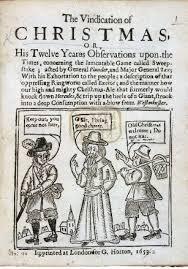The Historical Jesus: Unveiling the Elusive Figure
Introduction to the Historical Jesus
The term “Historical Jesus” refers to the scholarly investigation of the life and teachings of Jesus of Nazareth, distinguishing between the man known by his contemporaries and the figure depicted in religious texts. This exploration is paramount within both theological and secular studies, as it seeks to separate historical facts from theological beliefs and mythologies that have developed over centuries. Scholars have identified Jesus as an elusive figure primarily due to the limited and often contradictory sources available from the time of his life, including the Gospels, non-canonical writings, and historical accounts by contemporaries.
The Gospels of the New Testament, written decades after Jesus’s death, are the most prominent sources regarding his life. However, they are theological documents that may reflect the beliefs and biases of their authors rather than strictly historical accounts. Consequently, understanding the Historical Jesus requires a critical analysis of these texts, juxtaposed with historical context and archaeological findings. Furthermore, the oral traditions and cultural narratives surrounding Jesus’s life contributed to the complexity of his portrayal, leading to varying interpretations among scholars.
This blog post aims to dissect the life of Jesus through a historical lens, examining the methodologies employed by scholars to scrutinize ancient texts and artifacts. By addressing various hypotheses about his life—from his socio-political environment to his teachings and miracles—readers will gain insights into the contentious nature of Jesus’s historical status. Notably, it emphasizes that the quest for the Historical Jesus is not merely an academic endeavor but also a deeply personal and philosophical exploration that has implications for both faith and scholarship.
The Challenge of Historical Evidence
The study of the historical Jesus presents significant challenges, primarily due to the limited and often ambiguous nature of available evidence. Scholars rely heavily on a variety of sources, including Christian texts, non-gospel writings, and archaeological findings, to create a coherent picture of Jesus’s life. However, the evidence is sparse, and the complexities surrounding these texts necessitate a cautious approach to their interpretation.
Among the primary sources for understanding Jesus are the canonical gospels, which, while significant, are theological documents aimed at conveying religious beliefs rather than providing a comprehensive historical account. Non-gospel sources, such as the writings of the Jewish historian Josephus and the Roman historian Tacitus, offer fleeting references to Jesus, but these accounts are brief and often subject to debate regarding their authenticity and context. Scholars assess the reliability of these non-gospel sources by examining their origins, the intentions of their authors, and the historical context in which they were produced. This analysis highlights the limitations inherent in relying on such texts.
In addition to literary evidence, archaeological findings could potentially shed light on the historical Jesus. However, the archaeological record from the first century Judea remains scarce and sometimes ambiguous. Excavations in Jerusalem and surrounding areas have unearthed artifacts from this period, yet direct evidence linking these findings to Jesus specifically is often absent. This lack of conclusive archaeological support complicates the task of reconstructing a historically accurate portrait of Jesus. Consequently, the challenge of synthesizing the available evidence into a coherent historical narrative remains a significant hurdle for scholars exploring the life of this pivotal figure in religious history.
Gospels as Biographical Sources
The four canonical gospels—Matthew, Mark, Luke, and John—serve as primary sources of information regarding the life and teachings of Jesus. These texts are distinctive in that they blend biographical accounts with explicit theological purposes, creating a complex narrative that poses challenges for historians attempting to reconstruct the historical figure of Jesus. Each gospel presents its own portrayal of Jesus, shaped by the unique contexts and the audiences for which they were written.
Mark, considered the earliest gospel, offers a succinct and somewhat raw depiction of Jesus, focusing on his actions and the urgency of his mission. It presents Jesus as a charismatic figure amidst a backdrop of conflict with religious authorities. Matthew expands on this depiction, incorporating many of Mark’s elements while emphasizing Jesus’ fulfillment of Jewish prophecies, thus appealing to a predominantly Jewish audience. In contrast, Luke introduces a more polished narrative, presenting a detailed account of Jesus’ life, including parables and teachings that highlight social justice and the value of marginalized individuals.
John diverges significantly from the synoptic gospels (Matthew, Mark, and Luke) by presenting a more abstract and theological interpretation of Jesus. Here, the emphasis is placed on the divine nature of Jesus, framing him as the pre-existent Word of God. This approach offers rich theological insights but complicates efforts to discern the historical realities of Jesus’ life. The theological agendas of the gospel authors can lead to embellishments or omissions that obscure the true historical figure.
As scholars engage with these texts, they must navigate the intricacies of the authors’ intentions, recognizing that while these gospels serve as vital biographical sources, they simultaneously reflect the theological concerns of their time. This duality necessitates a critical examination of the texts to extract a coherent narrative of Jesus from the theological layers that adorn these foundational works.
Legends and Cultural Narratives
The figure of Jesus, as portrayed in the gospels, is not merely a product of historical facts but is significantly shaped by earlier traditions and cultural narratives. These legends often draw from a rich tapestry of stories prevalent in the ancient Near East, which have influenced the development of early Christianity. By examining these narratives, one can gain insight into how various cultural contexts impacted the portrayal of Jesus’ life, ministry, and teachings.
Many elements within the gospels can be traced back to pre-Christian legends that served to convey moral and theological messages. These stories frequently emphasized the miraculous and divine nature of significant figures, often serving to bolster the legitimacy of their teachings. For instance, motifs such as virgin births, miraculous healings, and resurrection stories are prevalent in the literature of various cultures prior to the emergence of Christianity. The integration of these themes into the narrative of Jesus can be seen as a tool utilized by early evangelists to resonate with their audiences.
The cultural and historical contexts of the times when the gospels were written also played a crucial role in shaping the depiction of Jesus. As early Christians sought to establish their identity within a predominantly Roman and Jewish landscape, they adapted these legends and narratives to address contemporary concerns and issues, Imbuing Jesus with qualities that would appeal to both Jewish and Gentile audiences. This amalgamation of influences often resulted in a portrayal that reflects the spiritual hunger and ideological struggles of their communities.
Therefore, understanding the legends and cultural narratives surrounding Jesus is essential to grasp the complexities of his historical representation. These narratives not only highlight how Jesus was interpreted through the lenses of his followers but also underscore the adaptive nature of religious storytelling in conveying deeper meanings relevant to their societies.
Scholarly Consensus on Key Facts
When examining the historical figure of Jesus, scholars have identified several key facts upon which there is a general consensus. One prominent agreement is that Jesus was baptized by John the Baptist. This event is frequently referenced in the New Testament and is considered foundational to understanding Jesus’ ministry. The act of baptism not only signifies Jesus’ initiation into public life but also symbolizes His connection to the Jewish prophetic tradition.
Another widely accepted fact is that Jesus was a preacher who traveled throughout Galilee and Judea, where he delivered teachings that emphasized ethical living, the coming of the Kingdom of God, and repentance. His role as a Jewish preacher is corroborated by various historical sources beyond the New Testament, including writings by Josephus, a Jewish historian, who briefly mentions Jesus in the context of His influence on the people during this period. However, interpretations of the nature and content of his teachings vary significantly among scholars, often influenced by theological implications.
While there is consensus on these fundamental aspects, controversies arise regarding other elements of Jesus’ life and message. For example, the interpretations of Jesus’ miracles and His claims of divinity lead to diverse understandings within both academic and religious communities. These differing perspectives often hinge on the methodologies employed in historical-critical research, resulting in a spectrum of scholarly views ranging from strictly historical to those that embrace more theological narratives. The complexities surrounding these key facts demonstrate the multifaceted nature of Jesus’ life and the continuing quest for a deeper understanding of His historical significance.
The Impact of Jesus’s Story Through Time
Over the past two millennia, the narrative surrounding Jesus has undergone significant transformations, reflecting the evolving social, cultural, and moral landscapes of various societies. Initially, the stories of Jesus were primarily disseminated through oral traditions, which allowed for variations in interpretation depending on the community’s values and beliefs. As a result, different cultures adapted his teachings to align with their own social structures and ethical considerations.
During the early centuries of Christianity, the stories of Jesus were influential in shaping the moral codes of emerging civilizations. With the establishment of Christianity as a state religion in the Roman Empire, his narratives took on additional meanings, intertwining with political power and societal norms. The depiction of Jesus often evolved to embody ideals such as strength, sacrifice, and compassion, resonating with communities grappling with issues of authority and governance.
Through the Middle Ages, Jesus’s story adapted further, as it became a central figure in the struggle between faith and reason. Various artistic representations and theological interpretations sought to reconcile Christ’s divinity with human experience, resulting in a rich tapestry of art and literature exploring the mystery of his life and teachings. This period also saw his story used to support various ideological movements, further showcasing the malleability of the narrative.
In more contemporary contexts, the relevance of Jesus’s story continues to manifest through diverse perspectives. From liberation theology to secular interpretations, his life and teachings have been utilized to challenge systemic injustices and to foster personal identity among marginalized groups. As society evolves, the narrative of Jesus remains a powerful symbol, reflecting enduring questions of morality, purpose, and what it means to be human. Thus, the legacy of Jesus, though rooted in ancient history, endures and transforms, constantly finding new expressions relevant to the times.
Hope, Identity, and Moral Values
The figure of Jesus has served as a wellspring of hope for countless individuals and communities throughout history. His teachings and life exemplify perseverance in the face of adversity, providing a beacon of light during times of despair. The message of hope that resonates from Jesus’ narrative encourages believers to look beyond their immediate struggles, fostering a sense of purpose that transcends daily challenges. This enduring theme of hope has been pivotal in shaping the identities of various communities, often uniting them through a shared mission toward moral excellence and compassion.
Identity, particularly within Christian communities, is profoundly influenced by the teachings of Jesus. Followers perceive themselves as embodying the virtues he espoused: love, kindness, forgiveness, and humility. This identification with Jesus not only cultivates personal self-worth but also strengthens communal bonds, allowing people to see themselves as part of a larger narrative grounded in moral values. The transformative power of Jesus’ identity inspires individuals to reflect on their values, motivating them to act in ways that prioritize empathy and altruism.
Morality is another significant theme associated with Jesus as his life and teachings challenge individuals to reconsider ethical frameworks. His parables often highlight the importance of compassion and the necessity of treating others with dignity and respect. These moral precepts have transcended time, continuing to guide the moral compass of societies even today. By espousing universal values that transcend cultural and temporal boundaries, Jesus has contributed to the formation of ethical standards that encourage a commitment to justice, peace, and love. The essence of his moral teachings inspires people to become vessels of hope and agents of change, making Jesus a lasting figure of influence in the pursuit of a more compassionate world.
Contemporary Reinterpretations
In recent years, the figure of Jesus has undergone significant reinterpretation by modern scholars, theologians, and artists, as they seek to understand his life and teachings in the context of contemporary issues. These reinterpretations often aim to reclaim the historical Jesus from the layers of theological discourse and cultural tradition that have accumulated over centuries. Scholars approach this endeavor from various angles, employing historical-critical methods, sociocultural analysis, and literary criticism to peel back the layers of myth and dogma surrounding his persona.
The emergence of social justice movements has particularly influenced the way Jesus is perceived today. Contemporary advocates for social justice often highlight Jesus’s radical messages of love, compassion, and equality, framing him as an icon for change in a world rife with systemic inequalities. This reinterpretation emphasizes his outreach to marginalized communities, challenging followers to embrace activism that aligns with his teachings. The narratives of Jesus’s interactions with the poor, the oppressed, and women are frequently spotlighted, offering a lens through which one can engage with modern social struggles.
Moreover, artists play a crucial role in the contemporary reimagining of Jesus. They infuse his image and story with relevance to current cultural and ethical dilemmas. Through various mediums such as visual art, literature, and theater, these creators reflect on and amplify the themes of hope, redemption, and reconciliation that resonate with today’s audience. By presenting Jesus in a light that correlates with contemporary values, they bridge the gap between ancient texts and present-day experiences. This convergence of interpretation fosters a dialogue that allows individuals to explore their personal beliefs in relation to the historical Jesus and his enduring impact.
Conclusion: The Legacy of the Historical Jesus
The exploration of the Historical Jesus unveils a figure deeply enmeshed in the fabric of both religious faith and historical inquiry. Throughout this discourse, we have examined various dimensions of his life and teachings, recognizing the profound impact that this figure has had on the development of Western culture and spiritual beliefs. His legacy extends beyond the confines of religious doctrine, influencing ethical frameworks, social justice movements, and philosophical thought. The Historical Jesus invites individuals from diverse backgrounds to grapple with questions of morality, purpose, and the nature of human relationships.
As we reflect on the implications of the Historical Jesus, it becomes evident that his life and messages resonate with profound relevance today. Historical accounts reveal that Jesus championed principles of love, compassion, and forgiveness—values that continue to inspire significant discourse in modern society. The teachings attributed to him have fostered communities focused on humanitarian efforts and social reform. Moreover, his challenges to societal norms offer a timeless call to confront injustices, making his legacy a vital reference point for contemporary ethical considerations.
For individuals exploring their personal faith, the Historical Jesus serves as a compelling figure to delve deeper into one’s beliefs. Engaging with his life not only enriches spiritual understanding but also encourages critical reflection on how his teachings can be integrated into current life practices. In various social contexts, the relevance of the Historical Jesus emerges through continued discussions and interpretations, affirming his role not just as a religious figure but as an essential archetype for moral leadership.
Ultimately, the legacy of the Historical Jesus endures, challenging each generation to navigate the intricacies of faith, morality, and the pursuit of justice. Through ongoing exploration, individuals and communities may find renewed inspiration and guidance from his enduring messages.











Leave a Reply
You must be logged in to post a comment.